Podcasts have evolved over the years, and they are a source of connecting listeners from all around with specific interests as well as compelling stories and insightful comments. Whether it’s a serious topic, or just a fun casual hangout with a celebrity, podcasts cover all. Being a content creator, your aim should be to ensure that your content is relatable and accessible to everyone. That means overcoming linguistic barriers. And doing so in the podcast world is only possible by translation. You can translate podcast to English, Spanish and other widely spoken languages to increase your audience. To answer your question of how to translate podcasts, we’ve scouted the internet and found 3 easy ways, which we’ll talk about in detail.
Part 1. How to Translate Podcasts into Another Language
The first way of translating podcasts involves using BlipCut Video Translator. This AI translation tool can translate podcasts ensuring AI localization of your videos. With support for more than 140 languages, offering essential features like voice cloning and lip-sync, BlipCut trumps a lot of its competitors. BlipCut bases its translation on ChatGPT and DeepSeekR1, ensuring accurate translations while at the same time reducing costs significantly as compared to traditional services. Besides BlipCut’s ability to translate podcast, users can also benefit from other features like AI subtitle generation, subtitle translation and others.
We’ll now briefly show you how to translate your podcasts into any language you desire. All you have to do is follow the instructions below:
Step 1:Go to BlipCut’s website and click on either Try Free Online or Download their software for Windows or Mac. For the purpose of this discussion, we’re talking about the downloaded program. After downloading, install the program and launch it.
Step 2:Once the app has launched, next step is to either paste the link to your podcast or upload the video file itself. Click on Upload File. From the pop up box that opens, find and select your podcast video file.
Step 3:Once the video is uploaded to BlipCut, it’ll take you to the next page, where you can choose the target translation language, as well as the AI voice for the translation. You can instantly close your own voice if you want.
Step 4:If you have a subtitle file, you can also upload it at this stage. Then hit Translate. It will take a few minutes to complete your task. Note that with the free trial, you only get 2 credits, and each credit can give you 1 minute of video translation.

It is advised to wait patiently while the translation completes.

Step 5:Finally, when the task is complete, you’ll see the translated video, and you’ll be able to preview it.

Step 6:Moreover, you can see each individual sentence in the video and its translation. Here, you can edit any inaccuracy and also change the speaker voice if its incorrect. Finally, after confirming all the details, hit Export.

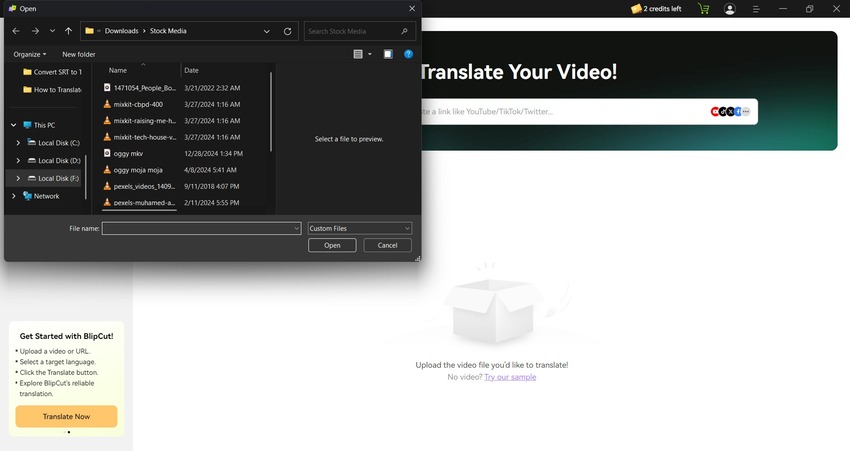
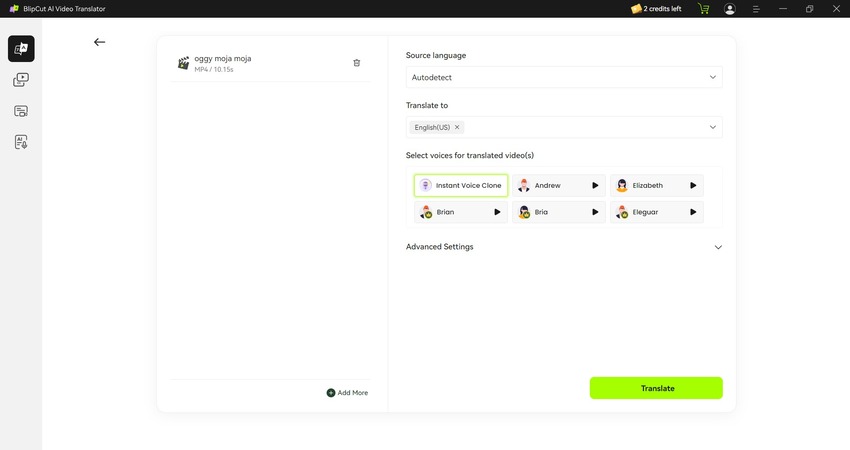
You may download only the video, or the audio, or just the subtitles. BlipCut is how you to translate podcast to Spanish or any other language for that matter.
Part 2. 2 Other Ways to Translate Podcasts You Can Try
Besides BlipCut, we have other ways as well that can allow us to translate podcasts. One of them is Maestra and the other one is Clideo. Let’s discuss both of these one by one.
1. Maestra
Maestra is an all-in-one package. As its name suggests, it is quite efficient as a complete AI podcast workstation. From real-time translation of meetings on Zoom to video transcription, translation and dubbing, Maestra offers a full package. Thanks to their integrations with popular services like YouTube, OBS, Zoom and others, users can benefit fully from their wide array of tools and services. Below are some points in favour and some against the use of Maestra.

Pros:
![]()
-
Support for more than 125 languages.
-
Real-time translation for Zoom meetings.
-
AI transcription feature allows for creating subtitles as well.
-
AI dubbing and voice cloning allow you to retain originality in your podcasts.
-
Free trial version lets you gauge Maestra’s abilities.
-
Browser based UI, meaning no download or installation required.
-
Collaboration feature makes team tasks a possibility.
Cons:
![]()
-
Most advanced features can’t be accessed in the trial package.
-
Since its browser based, you need an active internet connection.
-
Processing times may vary depending on video length and server load.
2. Clideo
The second method which allows us to translate podcast is Clideo. This online video translator is capable of translating not only the subtitles, but also the audio itself. Being an online tool, it is accessible on all devices. This tool allows you to not just translate your videos, but also create subtitles, modify them, save them as an SRT file as well as change the format of your video. While trial version only gives you limited access to features, Clideo Pro can transform your life.
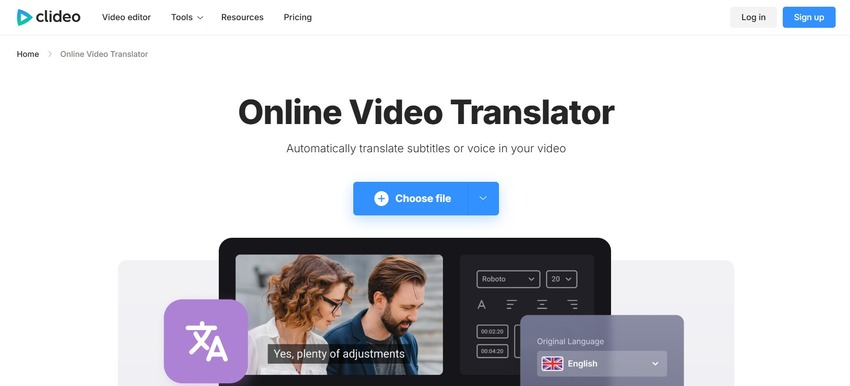
Pros:
![]()
-
Its browser only tool, which means no installation is required.
-
Intuitive and simple UI allows for easier use.
-
Offers other tools like screen recorder, create Gifs, resize videos and others.
Cons:
![]()
-
Free version has limitations.
-
Offers fewer comprehensive features and lesser control as compared to Maestra or BlipCut.
-
Internet dependency still remains an issue.
Part 3. Comparison Table Between These 3 Ways to Translate Podcasts
We shall now compare each of these ways in different aspects, offering you a clear view of their abilities and helping you reach a decision of which tool to use.
| Feature | BlipCut | Maestra | Clideo |
|---|---|---|---|
| Supported Languages | 140+ | 125+ | 100+ |
| Voice Cloning | Yes (multi-speaker) | ||
| Subtitle Translation | Auto-translation & editing | Auto translation & export in file | Auto-translate |
| Free Tier | 2 free credits; 1 credit is equal to 1 minute of video translation | Offers free credits sometimes. | 10 min/month free |
| Output Formats | Video, audio, SRT, VTT, TXT, DOCX, PDF | Audio, text, SRT, VTT | Video, audio, SRT, TXT |
| Customization | Font, style, voice settings, speakers for each sentence | Real-time UI edits | Subtitle design tools |
| Real-Time Translation | |||
| Platform | Web & Windows&Mac | Web | Web |
Part 3: FAQs on How to Translate Podcasts
Q1. Is there a way to translate a podcast?
A1: Yes, you can translate podcasts quite easily, all thanks to AI powered tools. From BlipCut to Maestra and even Clideo, users can benefit from the AI localization and video translation tools.
Q2. Can ChatGPT translate podcast?
A2: ChatGPT can’t translate podcasts directly as it doesn’t have the ability to process videos yet. However, you can give the podcast transcription to it and ask ChatGPT to translate it into any language.
Q3. Can Spotify translate podcasts?
A3: Yes, Spotify has recently introduced a feature called as Voice Translation which means that users can listen to their favourite podcasters in their native languages.
Conclusion
To wrap it up—if you’re thinking about how to translate a podcast, BlipCut is honestly all you need. It’s super easy to use, gives you full control over translations, and helps you reach a global audience without any stress. Whether you’re just starting out or already have a solid following, BlipCut makes the whole process smooth and efficient. Give it a try and see how far your podcast can go!
Leave a Comment
Create your review for BlipCut articles




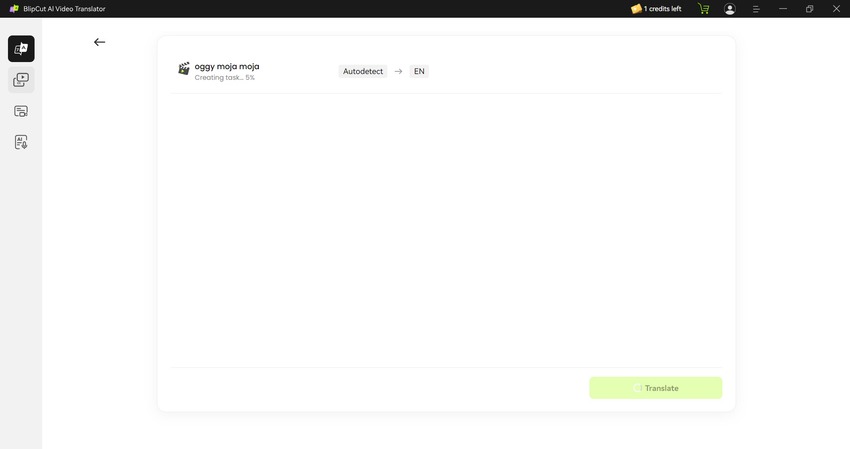
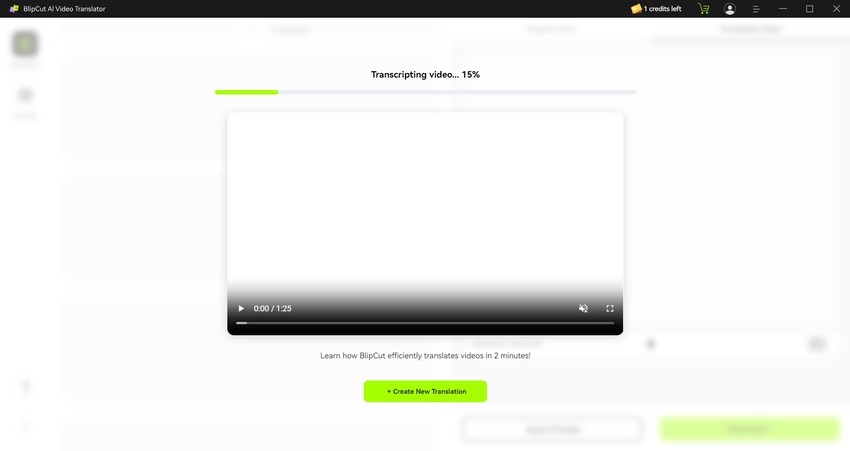
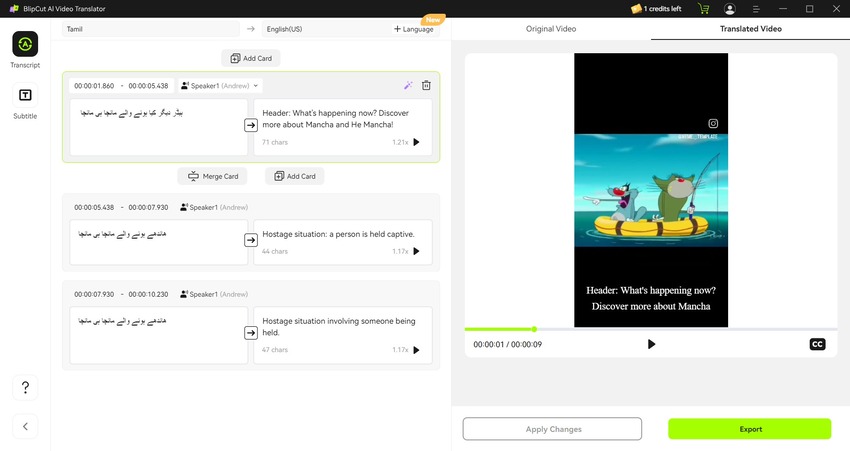
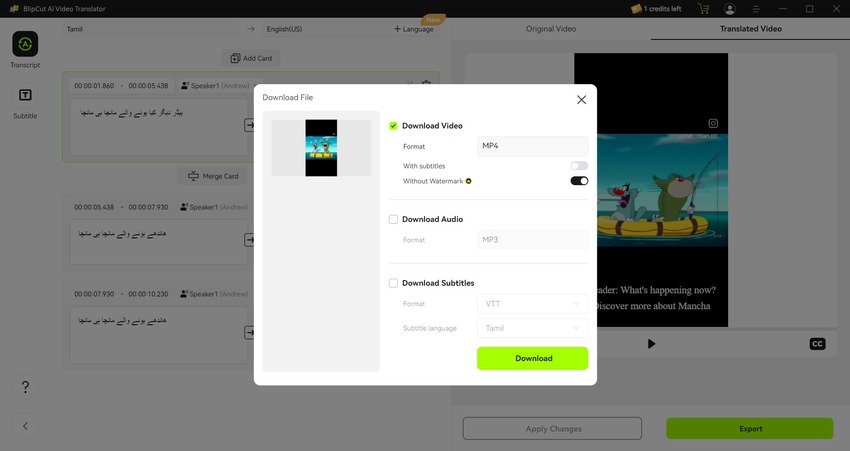

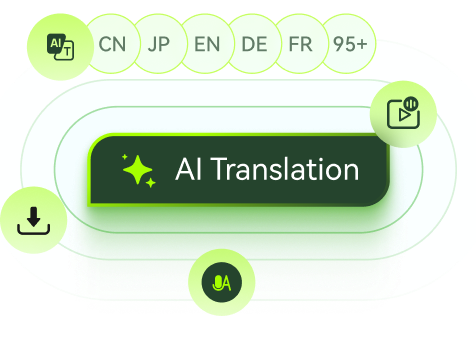
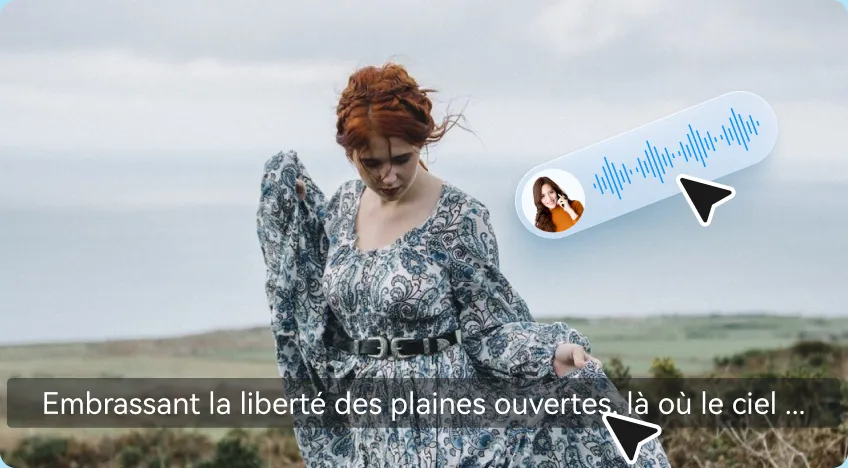


Blake Keeley
Editor-in-Chief at BlipCut with over three years of experience, focused on new trends and AI features to keep content fresh and engaging.
(Click to rate this post)